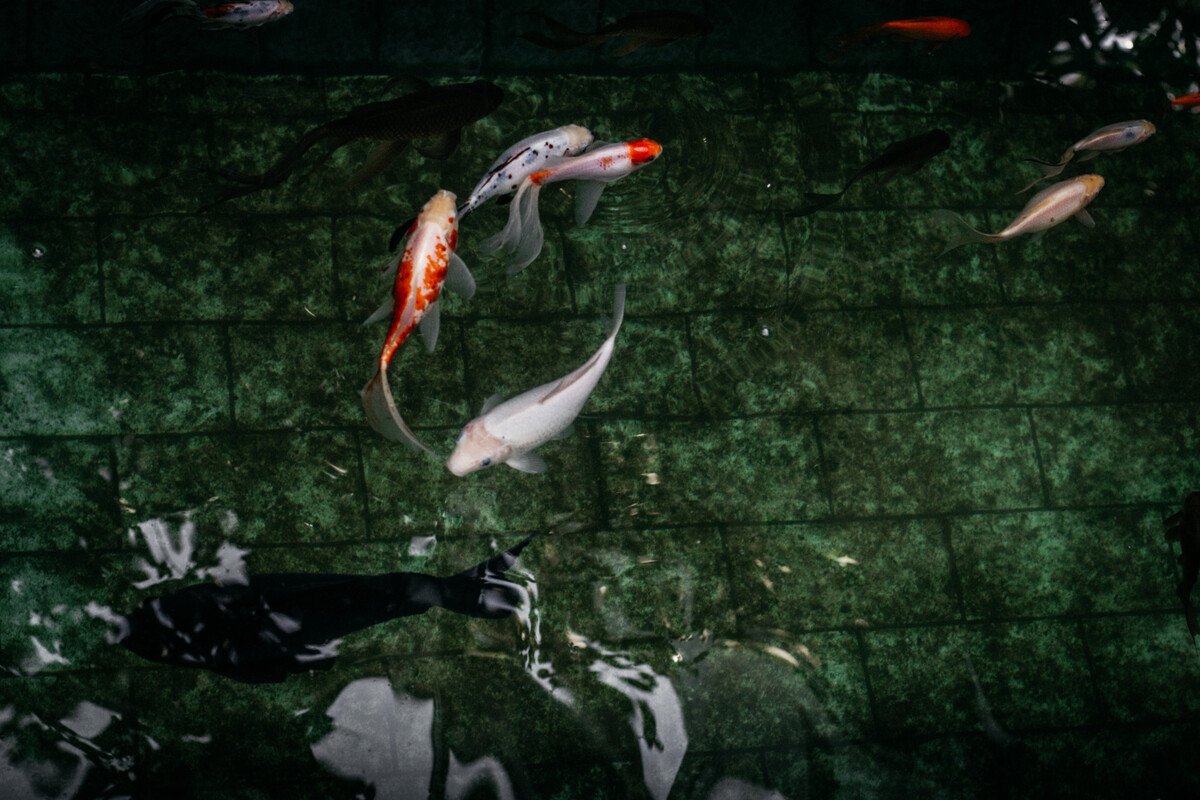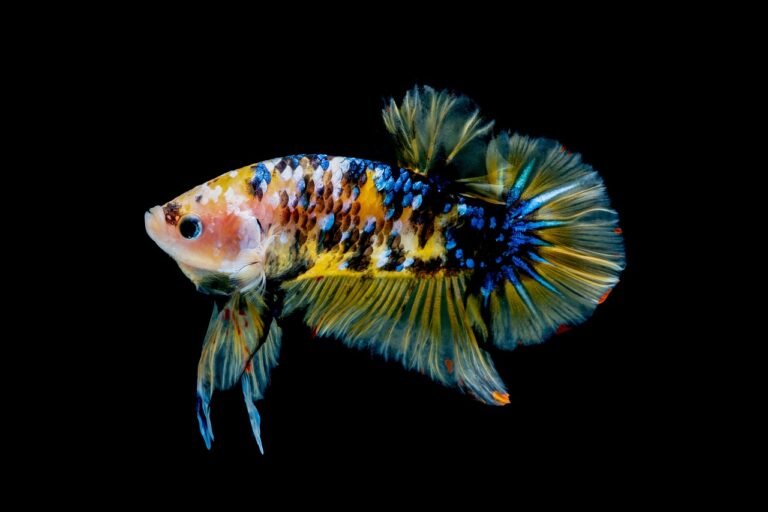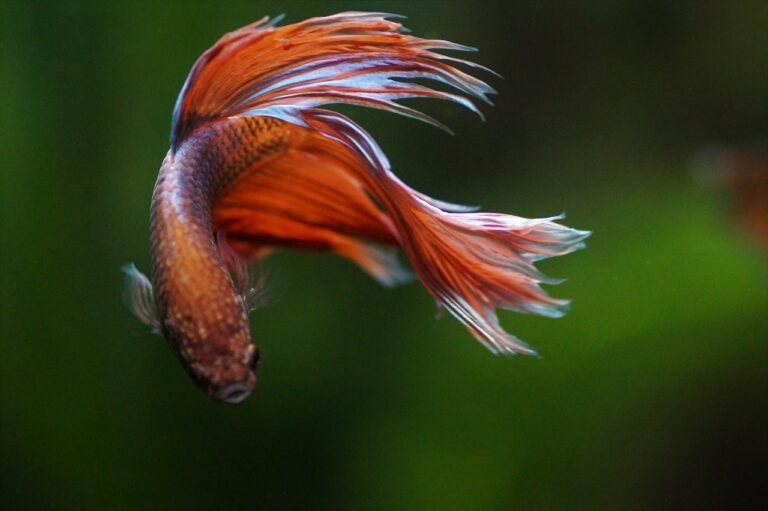Having a betta fish as a pet can be a highly gratifying experience. These colorful and fascinating creatures are famous for their brilliant hues, flowing fins, and individual characters. However, many aquarium hobbyists wonder whether they can ever introduce other fishes or even aquatic friends into the tanks of their bettas. Looking for suitable betta fish tank mates is always a hard task but when done with proper care and knowledge you can be able to create an environment whereby all occupants can co-exist.
In this detailed guide, we will explore the world of betta fish tank mates; helping you understand compatibility, the design of tanks and proper ways to introduce them. Through understanding how your betta fish behaves and also that which is needed by other tank mates; it will be easier to decide on things that would provide better conditions as well as safety.
Understanding the compatibility of betta fish
Before looking into specific tankmate options, there is a need to look at how compatible Siamese fighting fishes are with other water species. Bettas which are also known as siamese fighting fishes are territorial in nature that could lead them to exhibit some aggressiveness especially towards other male bettas or even those that have vibrant colors with flowing fins.
Despite being touted as solitary animals, they can actually live harmoniously with certain tankmates if introduced properly and provided with the right habitat. Nonetheless, it is worth noting that not all kinds of fish or aquatic creatures may serve as good companions for bettas since some might trigger territorial instincts while others may provoke aggression.
Factors to consider when choosing companions
When selecting potential tank mates for your betta fish, there are several factors to consider:
Tank Size: Bettas do well in 5 gallons but larger tanks are always better especially when housing other fishes or any form of water bodies. Large areas are essential to reduce territorial conflicts and make enough space for all occupants’ swimming.
Water Parameters: Ensure that the water conditions, such as temperature, pH levels, and water hardness, are suitable for both your betta and the potential tank mates. Different species may have different preferences.
Temperament: Study the behavior of your fish so as to learn its nature while with others. Some bettas can live with other fishes peacefully as they tend to be calm while others are highly aggressive. Choose tank mates accordingly.
Hiding Spaces: Make sure you provide hiding spots in forms like caves, driftwood or dense green leaves where your betta and its companions could define their territories in addition to having refuges during unfolding fights.
Diet Compatibility: Also ensure that you consider nutritional requirements of your beta along with those who will become its contemporaries in the tank. Avoid incorporating fish which will outcompete it for food or possibly try eating it up at some point.
By focusing on these factors, a successful non-stressful cohabitation between your betta fish and other potential tank mates can be enhanced.
Betta fish tank mate options
Having understood the basics on Betta fish compatibility, let us now look at a number of popular tank mate options that can potentially coexist with your betta.
Popular fish species that can live with betta fish
Corydoras Catfish: These peaceful bottom dwellers make great companions to bettas. They also help in keeping the tank clean by scavenging for food leftovers and debris. However, ensure that you have a large enough tank to accommodate their active nature.
Tetras: There are various types of tetras such as Neon Tetras, Cardinal Tetras and Ember Tetras among others which could be good tank mates for bettas. These small, non-aggressive schooling fish add movement and color into the aquarium. Wait until you have six or more before you introduce them so as to benefit from their best behavior.
Guppies: When they are introduced at the same time and given enough hiding places they can live peacefully next to each other even though guppies tend to be nippy towards long-finned bettas. Male guppies should not be kept together with male bettas because their bright colors may cause aggression.
Platies and Swordtails: They are peaceful and hardy making them good choices as potential tank mates for your bettas but keep in mind that their long fins may attract undue attention. Put them with care as well as provide many hiding spots.
Otocinclus Catfish: While being small, these peaceful algae eaters will only help in cleaning your Betta’s tanks without posing any threat to it or any other residents.
Always remember that when introducing new fishes always do so gradually allowing time for acclimatization between your Betta and its potential future friends in the tank.
Tips for maintaining a harmonious tank environment
Here are some tips which will ensure peaceful coexistence between your betta fish and its tank mates:
Provide Enough Hiding Spots: As was said earlier, hiding places are important for establishing territories and reducing stress. To create a visually appealing and functional aquascape, use driftwood, rocks, and dense vegetation.
Optimal Water Quality: Allowing regular water changes and adequate filtration and monitoring of water parameters is essential to the health and well-being of all tank inhabitants.
Varied Diet: Your Betta’s diet should be balanced in order to meet its nutritional needs as well as those of the other fish you have put together. This will help avoid conflicts over food which may lead to fighting.
Observe their behavior: Keep a close eye on your Betta and its tank mates especially during their initial introduction phase. If any signs of prolonged stress or continual aggression are noticed then it may be necessary to separate or rehome them from one another.
By following these tips you will set up an aquatic community that thrives peacefully while exhibiting the beauty and individuality of your Betta fish with its hand-picked companions in betta fish tank setup.
How to introduce new tank mates to your betta fish
Bringing new tankmates into your established betta fish tank requires some careful planning. Here is a step by step guide on how to go about it without causing problems:
Quarantine & Acclimate- Quarantine any new fish or aquatic creatures for at least two weeks so that they can clear themselves from diseases if there is any. Gradually introduce them into the water conditions of your bettas’ tanks by introducing just a little bit within several hours.
Rearrange The Tank – Before adding new tank mates to your bettas’ tanks rearrange the decorations and plants within so as to break territorial boundaries as well as encourage your bettas to establish new ones.
Float the Bag: After you have successfully adjusted your new tank mates, put your closed bag or container for at least 30 minutes in a betta’s aquarium to float. This allows them to get used to each other’s presence and smells.
Introduce at Night: Choose to introduce new tank mates during the night when they are less active and territorial as this might reduce initial aggression.
Monitor Closely: Take keen interest on how your Betta is interacting with its new roommates as it may take several hours or days. If this leads to prolonged aggression or stress, be ready to separate them.
Provide Hiding Spots: It is essential that there should be a lot of hideouts for everyone so that they can go into hiding whenever they feel threatened and create their own territories.
Through following these steps and being patient through the introduction process, you will increase chances of successful integration of new tank mates into your betta’s aquatic world without any stressful results whatsoever.
Can betta fish live together
While it is possible for betta fish to live together in certain circumstances, it is generally not advisable to keep more than one bettas in the same tank. Here’s what you need to know about keeping betta fish together:
Male Bettas: Male betta fish are very territorial and fight other male bettas. Keeping two or more male bettas together in the same tank will likely result in non-stop fighting, stress, and potential injury or death.
Female Bettas: Female bettas are generally less aggressive than males and sometimes can be kept together in a sorority setup. However, this requires a large tank (at least 20 gallons) with plenty of hiding spots and densely planted areas where they may establish individual territories if necessary.
Male and Female Bettas: One can place one male betta with multiple females into an adequately sized heavily planted tank. Nonetheless, such setup calls for vigilant monitoring because the male can still become aggressive towards the females especially during breeding periods.
Juvenile Bettas: Young bettas can sometimes be kept together until they reach sexual maturity. However, once this is attained, they should be separated to avoid any fights from erupting between them due to aggression.
If you decide to try a sorority or community setup for multiple bettas, make sure there is enough space, hiding spots and also watch their behavior closely. You may have to separate individuals that show signs of aggression or even revert back to one fish tank if necessary.
Alternative companions for betta fish
While fish are often considered as potential tank mates for bettas, there are alternative aquatic companions that can add variety and interest to your betta’s tank. Here are some options to consider:
Shrimp: Many varieties of freshwater shrimp like cherry shrimps, amano shrimps or ghost shrimps can be excellent tank mates of betta fishes. These peaceful scavengers help keep the tank clean and can coexist peacefully with bettas as long as they do not appear as possible prey.
Snails: Snails such as Nerite Snails or Mystery Snails can be added into your Betta tanks in order to control algae growth and provide an interesting addition to the aquascape. Nonetheless, it ought to be noted that certain types of Bettas view snails as food items most especially those that are quite small.
African Dwarf Frogs: These little frogs can be an interesting tank mates for bettas. They are peaceful and occupy different levels of the tank, reducing the chances of conflict. Nonetheless, make sure your tank has a secure lid since African Dwarf Frogs have a reputation as excellent escape artists.
Aquatic Plants: Although not technically classified as tank mates, live aquatic plants can greatly improve the environment for your betta fish by providing hiding spots, oxygenating the water, and creating a natural, visually appealing aquascape.
Whenever you introduce new aquatic companions to your betta’s tank it is essential that you take the same precautions as with fish tank mates. Quarantine new additions, acclimate them gradually, and watch their interactions with your betta closely so that they can coexist peacefully without stress.
Common Mistakes to Avoid When Keeping Betta Tank Mates
While introducing tank mates to your betta fish can be an exciting endeavor, it’s important to be aware of common mistakes that can jeopardize the health and well-being of your aquatic inhabitants. Here are some pitfalls to avoid:
- Overcrowding: Putting too many fish or other water creatures in the aquarium may lead to stress, increase in aggression and poor quality water. Always research about the appropriate stocking levels for your specific size of aquarium ensuring adequate space for all inhabitants.
- Incompatible Species: Introducing aggressive or predatory fish or aquatic creatures towards bettas can only bring tragic consequences. Thoroughly research on potential compatibility among possible tank mates before introducing them into a betta’s environment.
- Lack of Hiding Spots: Having very few hiding spots where your betta and its friends could take shelter from each other increases stress which leads to aggression. Let caves abound in your aquascape; driftwood and vegetation should be thick enough such that all occupants get personal spaces they could call their own.
- Ignoring Water Quality: Ignoring regular changes in water quality, proper filtration and monitoring water parameters can easily reduce the quality of water resulting in stress; diseases may result and this could have fatal consequences for your aquatic inhabitants.
- Improper Introductions: Putting new tank mates without quarantine, acclimation or gradual introduction can cause shock and stress to both your betta and the new additions thereby increasing aggression risks as well as disease transmission.
- Ignoring Aggression: Failure to recognize continued aggressiveness in your betta fish among tank mates could lead to injury or death. If need be separate or rehome incompatible inhabitants.
By avoiding these common mistakes, you’ll increase the chances of creating a harmonious and thriving aquatic community that showcases the beauty and personalities of your betta fish and its carefully chosen tank mates.
Can you put 2 Betta together
In general, it is not advisable to keep two male bettas in one tank. Male bettas are highly territorial and aggressive towards other male bettas, so putting two males together will most likely result in constant fighting, stress, and potential injury or death.
However, there are some exceptions where it may be possible to keep two betta fish together:
Male and Female Betta: It is possible to keep a single male with one or more females in a large heavily planted aquarium. However, this setup requires careful monitoring since the male may still show aggression towards the females especially during breeding periods.
Female Betta Sorority: In a sorority, female bettas can be kept together, where more than one is housed in a large tank (at least 20 gallons) with plenty of hiding spaces and heavily planted areas to develop individual territories. Nevertheless, even in a sorority aggression may occur hence it is important to closely observe their behavior.
Juvenile Bettas: Juvenile bettas can sometimes be kept together until they reach sexual maturity, at which point they will need to be separated to avoid aggression and fighting.
Nevertheless, if you want two bettas living together, make sure that a larger fish tank is available and carefully observe them. Prepare yourself by separating any belligerent individuals or switching back to keeping just one betta if that becomes necessary.
Generally speaking, it is safer and less stressful to house only one fish per aquarium especially for males so as not to provoke a fight and maintain health.
Can Betta live with other Fish in the same tank
Yes, but this requires careful thinking for this kind of arrangement between the species in question. However they might get along with some tank mates when introduced properly and given the right conditions despite being depicted as lonely creatures most of the time.
Here are some important factors to consider when keeping betta fish with other fish in the same tank:
Tank Size: A bigger tank should be provided when introducing other fishes into a Betta environment. At least 10 gallons are recommended but anything bigger (20 gallons plus) will have more swimming space and minimize territory related disputes.
Compatible Species: Choose peaceful non-aggressive types of fishes that can coexist with Betta fishes. Corydoras Catfishes Tetras Guppies (females), Platies (females), Otocinclus Catfishes are among suitable options for this purpose. Avoid long finned or brightly colored fishes that would trigger your Betta’s aggressiveness.
Hiding Spots: Provide enough hiding areas such as caves, wood drifts and thick vegetations that will enable your Betta fish to establish its own territory and hide when necessary.
Water Parameters: Ensure that the water temperature, pH levels, and hardness are appropriate for both Betta and the other species of fish you plan on introducing.
Gradual Introduction: Introduce new tank mates slowly and cautiously following proper quarantine and acclimation procedures. You can float the bag or container containing the new fish in a separate tank with your betta so that they become accustomed to each other’s presence and scents without exposing them fully.
Monitor Behavior: Watch closely how your Betta interacts with its new tank mates especially during the first few hours/days. Be ready to separate them in case there is extended aggression or stress on any of them.
By doing this, a harmonious thriving aquatic community which illustrates the beauty while depicting different tapmates of your betta fish can be created if it follows these instructions patiently during introduction.
Final tips and Keypoints
Keeping betta fish with suitable tank mates can be a rewarding and enriching experience for both you and your aquatic pets. By understanding the compatibility requirements, providing a suitable environment, and carefully introducing new inhabitants, you can create a visually stunning and peaceful aquatic ecosystem.
There are some final tips for a successful betta fish tank mate.
Proper Research: Before you introduce any new tank mates, do a deep research on their care needs, temperament, and compatibility with bettas. Information is power when making decisions and preventing conflicts from arising.
Start with Bigger Tanks: Invest in larger tanks that offer sufficient space for each betta fish and its tank mates to establish their territories thus decreasing territorial disputes.
Provide Hides and Decorations: Incorporate a lot of hiding places such as caves, drift woods, dense plants that can be used for designing an attractive visual aquascape. Every living organism will need a place of refuge therefore this is an important achievement through hiding spots.
Maintain Optimal Water Quality: Regularly test water quality by undertaking partial water changes, using good filters or checking water parameters. The health of inhabitants relies heavily on maintaining a favorable environment.
Observe and Adjust: Observe closely the behavior of your betta fish with other inhabitants especially after introducing them into the same tank. Be ready to make adjustments or remove incompatible ones.
Enjoy the Journey: It can be very fulfilling and informative to add some companionship to your Betta Fish’s life. Take up the process with challenges being lessons while appreciating the beauty in diversity that comes with keeping different aquatic animals together.
Remember however that every Betta fish differs from another one in terms of its health condition and surrounding environment’s status thus requiring patience, observation skills as well as adaptability so as to result into a harmonious milieu for it & its carefully selected friends in an aquarium setting like yours.
When you want to start out this adventure of having a flourishing community of aquatic creatures around your pet Betta fish; consider visiting our online store where you will come across lots upon lots of top quality aquarium supplies including such things like tanks & filters just among others besides there being numerous options especially if you have plans to beautify your aquarium with plants which are alive. Don’t be left out on our exclusive discounts and combined offers which are aimed at assisting to establish an appealing and a fitting marine habitat for any of such systems as Betta fish one today.







